The palmetto tree is a popular landmark in South Carolina. It's on the state flag and plays a role in one of the country's most fascinating stories. What types of palm trees are found in South Carolina? Which palm tree species will prosper in this part of the country?
Saw palmetto, dwarf palmetto, sago palms, European fan palm, Mexican fan palm, and windmill palm are among the different types of palm trees in South Carolina.
Landscaping organizations will tell you that not every type of tree reacts the same way in the soil, particularly palms.
South Carolina has a lot of bright areas where palm trees can sprout. Its monsoon climate, with toasty summers and mild winters, offers plenty of sun and heat for a wide range of palm species to flourish.
Table of Contents
Types of Palm Trees in South Carolina
Selecting the perfect palm trees for the ideal location is essential to the tree's health. Take into account the soil, temperature, and frameworks.
Here are a few dependable cultivars to add a tropical touch to your orchard in you live in South Calorina:
See Also: Types of Palm Trees in Louisiana
1. Sago Palms
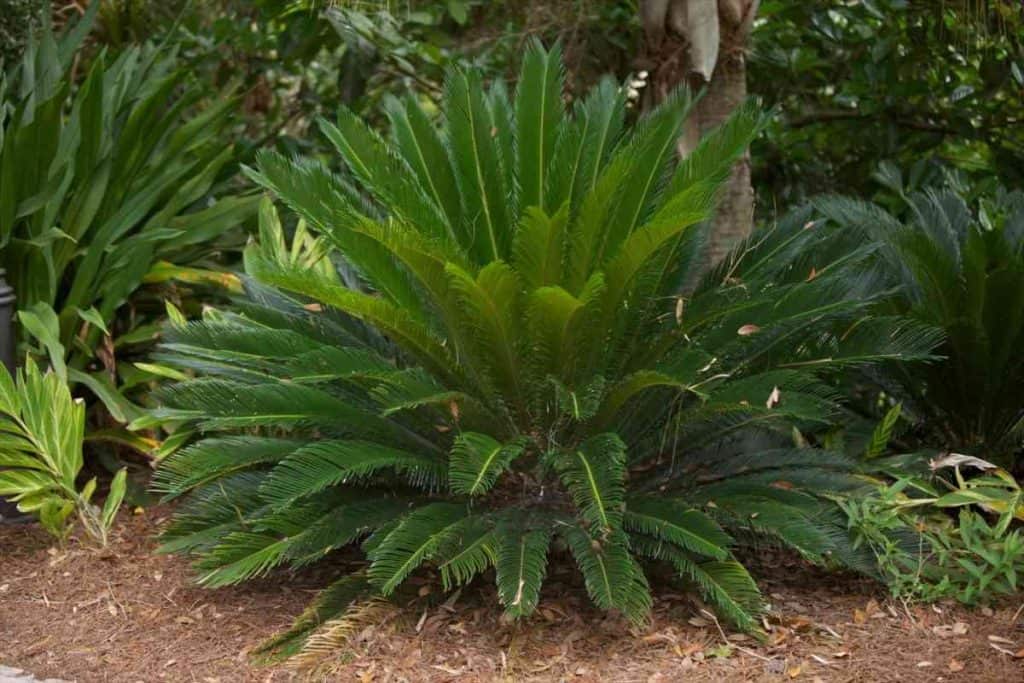
Sago palms are low-maintenance palms that thrive in Columbia gardens. Once put in place, sago palms flourish in direct sunlight and require little moisture.
This palm is distinguished by a central bulb and loosely contoured segmented green leaves. Pruning should be done with caution because the green leaves are solid and can be jagged.
Winter temperatures below 10 degrees F can harm sago palms. Many farmers grow sago palms in pots to be kept in a carport or greenhouse over the cold season.
If the branches are destroyed by an ice storm or exceedingly cold temperatures and turn brown, trim them back to the main bulb, and fresh fronds will emerge later in the spring.
Sago palms should be pruned at least once a year. When the fresh foliage shows up in springtime, they are stunning. One warning: many gardeners say that sago palms are poisonous to dogs. Ensure that you consider giving this illustrious variety an adequate space to develop.
2. Dwarf Palmetto

Sabal minor, also known as dwarf palmetto, is native to the continental United States and South Carolina.
Dwarf palmetto often confused with saw palmetto, is a bunching tree with an extremely small stem, even below the surface. It lacks ridges on the flanks of the trunks, unlike saw palmetto, and does not establish intrusive settlements.
The appearance of its fan-shaped foliage ranges from green to bluish-gray. Sabal minor leaves have a prominent split 'V' in the center of the leaf. This palm is very cold resilient and can withstand temperatures as low as 20 degrees Fahrenheit.
Still, it has been known to survive temperatures as low as -5 degrees Fahrenheit and as low as -10 degrees Fahrenheit.
As a result, you can develop it in all parts of South Carolina even without cold safeguard. Please remember that this palm is extremely difficult to transfer, so it's ideal for growing it from a container.
3. Windmill Palm
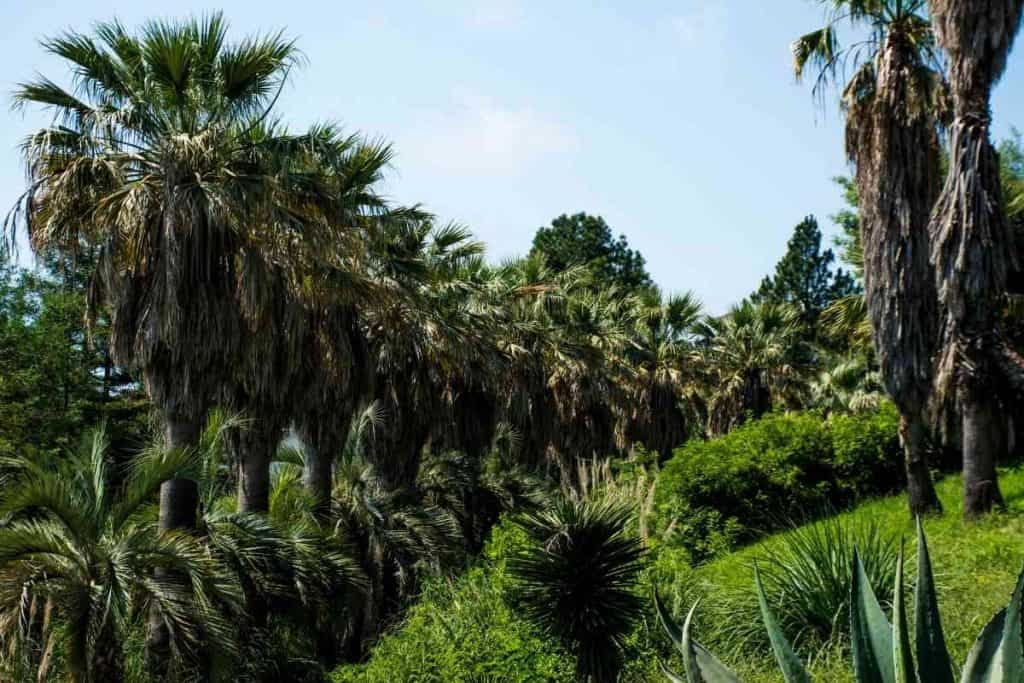
The distinctive Windmill Palm, which originated in Asia, thrives in many state regions. These palms sprout in various sizes, with some reaching heights of up to three feet and others reaching heights of up to forty feet.
Place one of these trees in the shelter if you want a tinier palm because less natural light results in slower development. You'll understand the allure of your Windmill Palm's lithe stem and lime green fronds no matter where you put it.
These palms are ideal for property owners who would like to show off their South Carolina confidence without having to put in too much effort. However, if you would like to maximize the charm and longevity of your Palmettos, collaborate with a landscaping company that deals in palm tree insertion.
See Also: 6 Popular Types of Palm Trees in Hawaii
4. Saw Palmetto
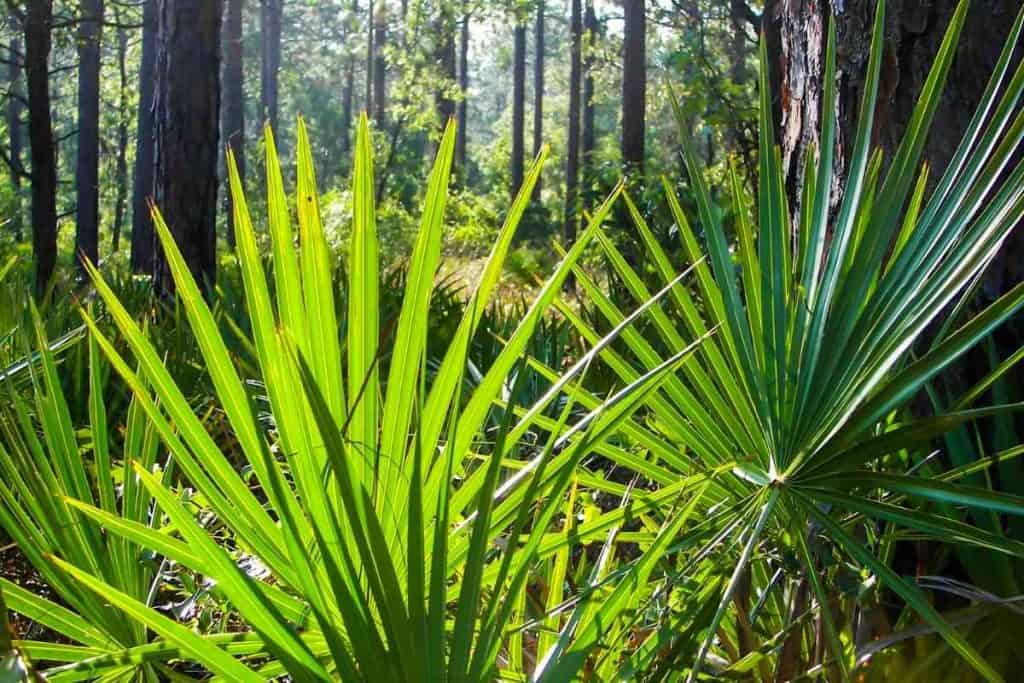
Saw palmettos, scientifically known as Serenoa repens, are native to the Southeast's shorelines, including South Carolina. This congested weedy plant creates a noticeable vegetative cover in dry wooded areas.
It has stiff fan-shaped foliage and a spine that creeps along with the soil layer or via soil. While saw palmetto and dwarf palmetto look similar, they are rarely encountered, thriving together in the wild.
It's best to get a container-grown plant since transplanting is challenging. This slow-growing palm can withstand temperatures as low as 10 degrees Fahrenheit. Although it can be grown in all parts of South Carolina, zone 7b will necessitate some cold security, particularly for the relatively young plants.
5. Mexican Fan Palm
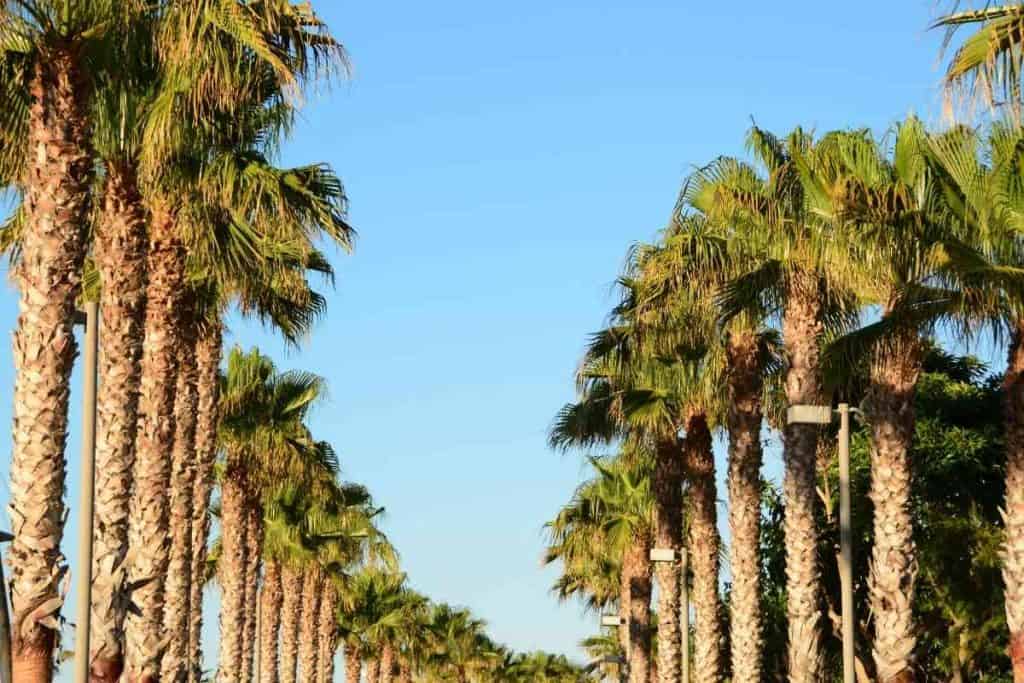
The Mexican Fan Palm, scientifically known as Washingtonia robusta, is native to Mexico. Mexican fan palm is frequently confused with California fan palm when it is young. It grows similarly to the California fan palm and prefers well-drained basic or neutral soil.
This quick palm can withstand temperatures as low as 10 degrees Fahrenheit, but temperatures below 23 degrees Fahrenheit will cause foliar harm.
6. European Fan Palm
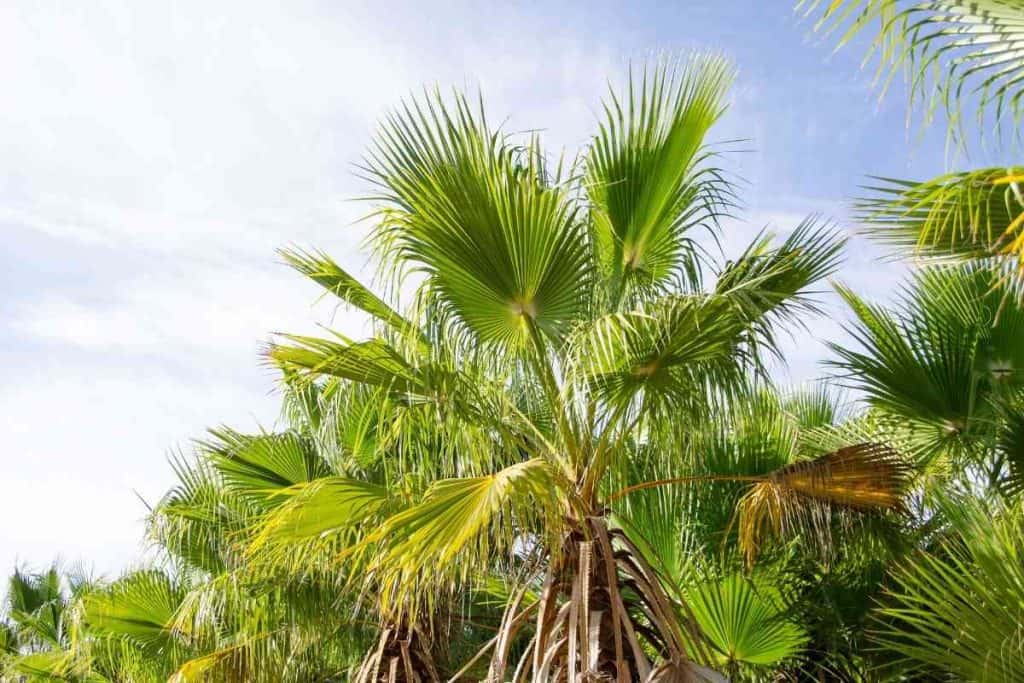
This palm variation is one of my favorites. European fan palms sprout more like bushes, ideal for planting in a large container. This is an ideal buy for poolside cultivation or a front door combo to welcome guests.
Fan palms complement sabal palmettos and windmill palms well. It is a multi-stemmed, shrub-like palm with bunching development. Plant them in clusters to add a tropical flair at the bottom of bigger trees.
They give the ground of a tree a skirt-like appearance. European fan palms can withstand winter freezing temperatures as 5 degrees Fahrenheit. On the other hand, ice can harm the fronds, so wrap the plant with old sheets or a cape if an ice storm is a forecast.
Frequently Asked Questions
Is it possible to grow palm trees in South Carolina?
This cherished palmetto, also recognized as cabbage palm, is a narrow coastal native flourish in fine sand. While palms are more common along the shoreline, they can sprout anywhere within South Carolina with the right combination of temperature, palm species, and treatment.
Do palm trees absorb water?
Irrigating the plant early in the morning keeps the soil drenched and fully wet during the warmer parts of the day. Misting your palm when it's hot outside can presumably destroy your plant's foliage.
How does an overwatered palm appear?
The following are symptoms of an overwatered palm tree: The foliage on palm trees begin to fall off. Shriveled fronds and leaves Leaf hyperpigmentation is caused by yellow or brown palm tree leaves that begin to fall off before dehydration.
What is the best location to grow a palm tree?
To avoid root rot, palms prefer well-draining land. Soils that are poorly desorbed will retain water, causing the tree's root ball to become mushy. If you're going to plant in a pot, ensure it has good drainage.
In South Carolina, how quickly do palm trees grow?
This palm can sprout 1 to 2 feet annually under optimal circumstances. Windmill palms are among the coldest hardy palms, growing in zones 7b to 8b in South Carolina. This palm thrives naturally in brightness to moderate shelter in the Southeast.
See Also: 5 Popular Types of Palm Trees in Texas
Conclusion
South Carolina does have a suitable atmosphere for palm trees. South Carolina has a wet subtropical climate with hot summers and mild winters. Temperatures in July typically range from 89-92°F (31-33°C), while temperatures in January typically range from 50-59°F (10-15°C).
This state experiences violent storm surges and twisters during the dog days of summer. And during winter, South Carolina receives approximately 1 inch (2.5 cm) of snow away from the sea. These types of palm trees in South Carolina will do well in the state if given adequate care and attention.




